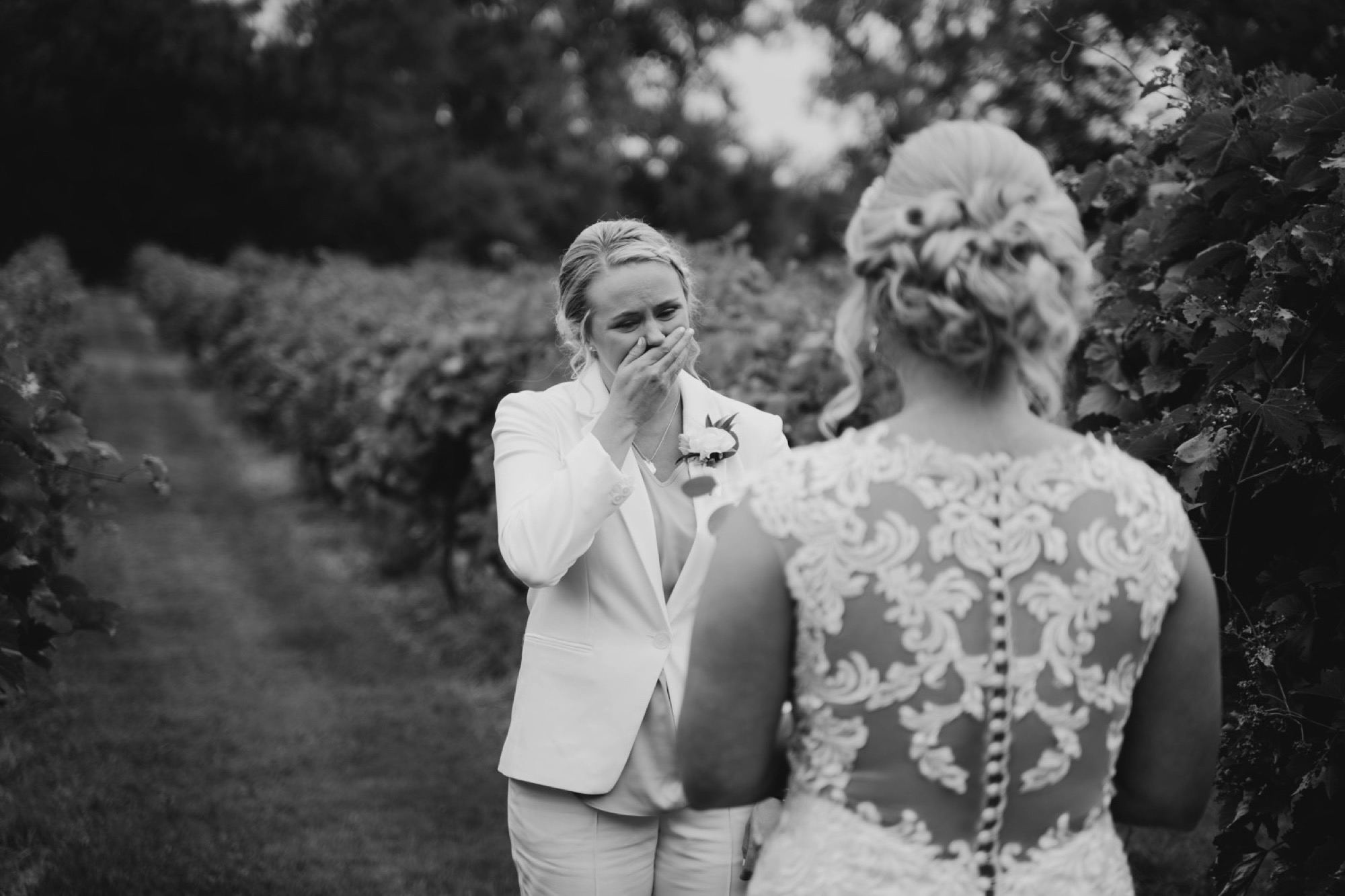
Mirrorless Wedding Photography – Why I Chose Sony
Filed in For Photographers — December 11, 2018

I started my photography career and continued to use Canon for 9+ years. I swapped to Nikon for 2+ months. After reading reviews, I took the plunge into mirrorless wedding photography. Here’s why I chose Sony.
The first thing I hear consistently is what is a mirrorless camera.
Mirrorless cameras lack an optical viewfinder or mirror. Instead, they have an electronic viewfinder that shows you exactly what your sensor sees.
I reached out and asked a few people the questions they had about mirrorless since it seems to be the big move now in photography. Canon and Nikon have introduced their own mirrorless cameras to try to keep up with Sony. I will also lay out the disclaimer that I have not tried their mirrorless cameras, only their DSLR cameras. I was not interested in investing in their systems after their announcements were made. The main reason is as a professional wedding photographer, there is only 1 card slot in each camera which is, in my opinion, an irresponsible purchase.
Here is a list of my equipment:
Sony A7III
Sony A7RIII
Sigma 24 1.4 art
Tamron 28-75
Sony Zeiss Distagon 35 1.4
Zeiss 55 1.8
Sigma 85 1.4 art
Sigma 135 1.4 art
Q&A
Q. What’s the battery life like?
A. I read review after review because after my short stint with Nikon, I didn’t want to waste money a second time. The one review I saw over and over was that the battery life is no good. I completely disagree. I am not an over-shooter by any mean, I take anywhere between 1k-2k photos in the span of an 8 hour wedding. I use no more batteries than I ever did with Nikon or Canon. Generally, I found myself changing my battery once between Ceremony and Reception.
Q. What made you switch from Canon and Nikon?
A. I had always considered switching to Nikon after some customer service mishaps but I loved the brand so I held on. After a particularly dark wedding this season, I compared my images to my second shooter’s who shot Nikon. Her camera was older, our settings were similar and yet her images looked clearer. I took the plunge after renting a Sony and deciding it was out of my comfort zone. However, after 2 months with Nikon, I decided the shutter noise was WAY too much for me and that with my arthritis I should just make Sony work. I’d had it and loved it, it just seemed like a HUGE change. I love how light weight it is and Nikon uses Sony sensors, so I was getting similar image quality. A win/win for me.
Q: Do you ever use your focus tracking or do you 100% rely on auto tracking?A. I will never 100% trust technology and I also temporarily have sigma lenses. I’ve gotten pretty good at using the touch screen while I photograph so if I notice focus isn’t hitting correctly (there’s a square that lets you know exactly where it’ s focusing) I’ll use the touch screen to pick my focus. I also have another custom button that will lock focus, so I use it similar to back button focusing if I don’t want focus to change.
Sample Images
Disclaimer: I know a million things go into making images different. This is to show you mainly what I mean further down when I mention not having an issue with color handling. I generally use some version of a 35mm 1.4 lens on every camera, and I edit generally the same (although my Sony edit was a little deeper and moodier). Through no part in any of my switches have I felt like the files were any more difficult to handle.

Sony A73

Nikon D750

Canon 5D Mark IV
Favorite Features
- Eye AF – I’ve found that for the most part this is accurate. Obviously, from the name, sometimes a person turned to the side is difficult or a ton of people in a group with varying distances can be almost impossible to decide who will be in focus. I find that used for its purpose, I’m getting my shots in focus 90% of the time or more.
- Digital Viewfinder – I get it, if you’re a professional you should be able to do the exposure triangle in your head and look at a situation to evaluate light. Blah blah Having a digital viewfinder to do that shit for you is priceless. No matter if I’m holding the camera in my hands or up to my eyes, if I move a dial I see the exact image my camera is going to take. I shoot in Kelvin + manual which is amazing because I also have my camera set up so I can review my image in the viewfinder. I’m not “chimping” or wasting time in between images because I know exactly what I’m photographing as it’s happening.
- Custom Buttons – Pretty much every button on my cameras is customizable. Even the ones without “C##”. This means to help me with the learning curve, I set up some of my custom buttons to match my DSLR. It made it way easier to lean into and every other button I’ve experimented with what I could possibly need on the fly. (For example, my most used ones are white balance, toggling silent shooting on/off, and my standard ISO, Aperture, Shutter Speed)
- Silent Shooting – Silent shooting is a double edged sword to me. With it on there’s some things you can’t use, such as an on camera flash. I haven’t looked into why although I’m sure it’s simple, but it doesn’t really bother me now that I know it and use it wisely. Why does a silent shutter matter? Imagine photographing a catholic ceremony for an hour and the priest doesn’t want photos taken because they’re noisy. Sit in the back row, turn on the silent shutter… and what noise? It’s literally silent. I also love using it during boudoir and receptions so people relax because they have no idea when you’re taking a photo. It’s upped my candid photo game x10.
- Size – I know I will have skeptics since I did buy this small camera and still put heavy lenses on it, but listen here. My zeiss 55 makes it seem like I’m barely carrying around a camera and the sigmas are big (the 85 is MASSIVE) but I keep them on my camera less. The 85 is really only for receptions. As someone with a bad back and arthritis, I’m calling this a win.
Potential Drawbacks
- Size – People with big hands should not buy this camera. I have seen review upon review of it and I can easily see how it would be an issue. However, I have very small hands and it fits perfectly in them.
- File Handling – Color handling I’ve heard is tricky. I personally edit my stuff till it just looks like me so I’ve never seen an issue unless against another brand. So far I have edited one wedding where my second photographer used Canon while I used Sony and matching tones was fairly simple.
- Custom Buttons – I’ve seen people say that too many custom buttons can turn them off. Too many choices, too many menu items to sort through, etc. My advice is to go out and practice for a bit before making a decision. ALWAYS RENT A CAMERA BEFORE YOU BUY IT
- Lens Selection – I wouldn’t call the Sony selection “bad” by any means, but it definitely doesn’t have, from what I’ve seen, the amount of lower priced, slightly slower lenses that you may find with Canon or Nikon. This is why I temporarily have Sigma gear. Selling my Nikon equipment has been significantly more difficult than selling my Canon gear.
- Online Documentation – When I research anything, I check online. It saves me the annoyance of being mansplained to and it’s usually quicker. Unfortunately, Sony isn’t as mainstream (yet) as the two heaviest hitters. Having to find answers means figuring out lingo Sony uses and comparing it to your old cameras or diving into group trenches for answers. This has been my main annoyance.